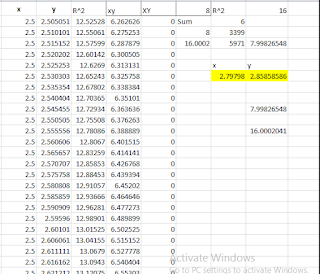The base of the probability theory
is always referred to permutations and combinations in which a permutation is
an ordered combination. It means, if we have “n” events and choose “r” of them,
we will have the opportunity to make many groups and subsets which are “r” from
“n” where the repetition and the replacement will also give us new concepts.
As you know, basically we have two
types of permutations:
1.
Permutations
with repetition which is calculated by below formula:
The number of
Permutations = n^r
2.
Permutations
without repetition which is obtained by below formula:
The number of Permutations = n!/(n-r)!
The purpose of this article is to
introduce a specific permutation.
A specific
permutation
Suppose we have a number of
events “n” and we consider whole events as the pairs just like below set:
S = {(a1,a2), (b1,b2), (c1,c2),
(d1,d2)….}
Here "S" is our sample space.
We are willing to make all permutations without repetition with “r” members from “S” where each set of permutations is included only one of the pairs. This is additional restriction for these permutations. It is clear; “r” must be always smaller or equal half of “n”.
We are willing to make all permutations without repetition with “r” members from “S” where each set of permutations is included only one of the pairs. This is additional restriction for these permutations. It is clear; “r” must be always smaller or equal half of “n”.
Therefore, the characteristics of
this specific permutation are defined as follows:
·
n =
2k and
k ε N
·
r ≤
n/2
·
Each
set of permutations is included only one of the pairs
The question is: How can we calculate the number of these
permutations?
By using below formula, we will be
able to get the number of all permutations:
For instance, when we choose three
choices from six events, we will have 48 permutations or if we have three
choices from eight events, we will get 192 permutations.
By using Microsoft excel, we can
generate all permutations on a spreadsheet of excel.
Example:
Generating the Points on a Sphere
Suppose our sample space or events
are pairs of plus and minus as follows:
S = {(-a, a), (-b, b), (-c, c)…}
In this case, for n = 6 we will
have: 48 points which have been located on a sphere.
Assume we have the point P (2, 5,
24) in the 3D space in which the sample space will be below cited:
S = {(-2, 2), (-5, 5), (-24, 24)}
All below points are located on a
sphere or gives us a field in 3D space:
Below model gives us all 48 points
on a sphere when we have only coordination of one point:
In above model, the inputs are the coordination
of one point P (x,y,z) and the outputs are the coordination of all 48 points on
a sphere. As you can see, the radius of sphere (r) always stays the constant.
In the reference with above
mentioned, below movie as well as shows an overall shape of this system when the
location of a point is changed:































